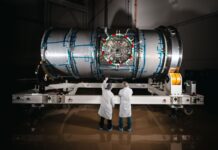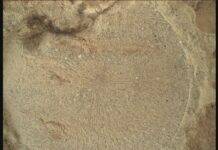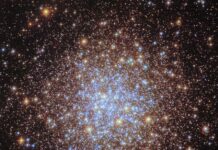The Significance of Peer-Reviewed Scientific Journals
Peer-reviewed scientific journal articles are the foundation of scientific research. Each article signifies the culmination of an extensive research project, having undergone rigorous scrutiny to ensure its accuracy and relevance. This process is a significant achievement for any scientific team, as it validates their hard work and contributions to the field.
The journey of publishing such a paper involves a multitude of steps. The primary author, who shoulders the responsibility of crafting the paper, must engage in a continuous cycle of writing, editing, and rewriting. This process is driven by feedback from colleagues, peers, and editors. It involves more than just revising words; it requires reanalyzing data and conducting further analyses to refine the study’s findings. Successfully navigating this demanding process often earns the author the esteemed title of the first author of a peer-reviewed scientific publication.
In an exciting development, an increasing number of NASA’s citizen scientists are taking on this challenge and achieving remarkable success. These dedicated individuals contribute to advancing scientific knowledge while being recognized for their efforts in prestigious publications.
Michiharu Hyogo: A Citizen Scientist’s Journey
One such pioneer in the realm of citizen science is Michiharu Hyogo. His paper, titled "Unveiling the Infrared Excess of SIPS J2045-6332: Evidence for a Young Stellar Object with Potential Low-Mass Companion," has been accepted for publication in the renowned journal, Monthly Notices of the Royal Astronomical Society. Hyogo conceived the idea for the paper and conducted the majority of the research using data from NASA’s now-retired Wide-field Infrared Survey Explorer (WISE) mission. We had the opportunity to converse with Hyogo about his life, insights, and the secrets to his success.
Life in Tokyo and the Path to Citizen Science
Michiharu Hyogo has been residing in Tokyo, Japan since the end of 2012. Prior to this, he lived abroad in various countries, including Canada, the USA, and Australia, for a total of 21 years. His diverse experiences have shaped his approach to science and research.
When it comes to NASA Citizen Science projects, Hyogo is currently involved in three different initiatives: Disk Detective, Backyard Worlds: Planet 9, and Planet Patrol. These projects are sponsored by NASA and offer opportunities for citizen scientists to contribute to cutting-edge research.
In his personal life, until March of last year, Hyogo worked as a part-time lecturer at a local university in Tokyo. Currently unemployed, he is actively seeking similar positions. His dream is to work at a community college in the USA while continuing his involvement in projects like these, which he finds fulfilling and impactful.
The Introduction to NASA Citizen Science
Hyogo’s journey into NASA Citizen Science began with an introduction from a friend from the University of Hawaii, where he completed his bachelor’s degree. Around 2011, his friend introduced him to one of the Zooniverse projects, a platform for citizen science endeavors. Although he doesn’t recall the exact project, it sparked his interest in contributing to scientific research.
One of the projects that Hyogo participated in was Planet Hunters, where he classified light curves from NASA’s Kepler observatory. It was during this time that he stumbled upon Disk Detective, NASA’s first sponsored citizen science project aimed at publishing scientific papers. A Facebook post from a friend alerted him to this opportunity, and he joined the project as he had ample free time.
Hyogo never anticipated that his involvement in Disk Detective would lead him to write his own paper, a milestone that he hadn’t even dreamed of achieving.
Gaining Valuable Experience and Making Discoveries
Working on these NASA-sponsored projects has been an immensely valuable experience for Hyogo. Scientifically, he has gained hands-on experience in analyzing astronomical data, identifying potential celestial objects, and contributing to real research efforts. Projects like Disk Detective, Backyard Worlds: Planet 9, and Planet Patrol have taught him how to systematically classify data, recognize patterns, and apply astrophysical concepts in a practical setting.
Beyond technical skills, Hyogo has gained a deeper understanding of how citizen science can complement professional research. Collaborating with experts and fellow volunteers has improved his ability to communicate scientific ideas effectively and work within a research community.
Perhaps most significantly, these projects have provided Hyogo with a sense of purpose and the opportunity to contribute to groundbreaking discoveries. Unexpectedly, they have also opened doors to opportunities such as co-authoring scientific papers, something he never imagined when he first joined.
The Discovery Process and Acceptance of the Paper
Hyogo’s journey to discovery began with the objective of identifying circumstellar disks around brown dwarfs. The Disk Detective team identified over 1,600 promising candidates that might possess such disks, based on criteria outlined in the project. Among these candidates, Hyogo discovered an object with the largest infrared excess and the fourth-latest spectral type, sparking his interest in further investigation.
While the team did not find a disk around this particular object, they uncovered intriguing physical characteristics, such as its youth and the presence of a low-mass companion with a spectral type of L3 to L4.
The acceptance of Hyogo’s paper for publication marked a significant milestone in his life. He expressed immense gratitude and excitement, describing it as a miracle and a positive impact on society. Hyogo’s journey exemplifies the power of perseverance and dedication in achieving one’s goals.
Advice for Aspiring Citizen Scientists
Hyogo offers valuable advice for other citizen scientists embarking on the journey of writing a paper. Firstly, he emphasizes the importance of collaborating with experts in the field. Seeking feedback from knowledgeable individuals can significantly enhance the quality of research and the clarity of the paper.
Secondly, Hyogo advises against assuming that others will automatically understand one’s research. It is crucial to have a clear understanding of the project and to communicate progress concisely and effectively. Engaging with others through meetings and discussions can facilitate better understanding and potential solutions to challenges.
Lastly, Hyogo encourages the use of Artificial Intelligence (AI) for tasks like editing, proofreading, and debugging. AI tools can save time and improve productivity, allowing researchers to focus on the core aspects of their work.
In conclusion, Michiharu Hyogo’s journey as a citizen scientist serves as an inspiring example of how dedication, collaboration, and a passion for discovery can lead to remarkable achievements in the world of scientific research. His contributions to NASA’s citizen science projects demonstrate the potential for individuals from diverse backgrounds to make meaningful contributions to the field of astronomy. As Hyogo continues his pursuit of astronomical research, we look forward to witnessing the continued impact of citizen scientists in advancing our understanding of the universe.
For more Information, Refer to this article.

































